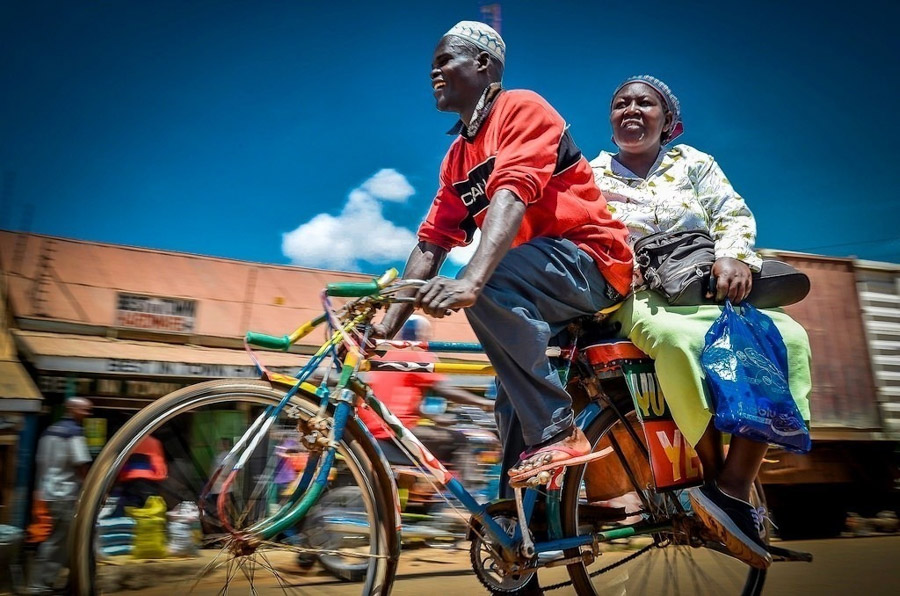When people have wheels, they go far, as shown in a new book on cycling in Africa
Whenever professor of technical history Ruth Oldenziel was told not to bother with a certain place “because they don’t cycle there,” she would think, “Oh, but they do.” “It’s simply a feature of a rising working class in industrial capitalism,” she says. “The story of South African mine workers who cycled between home and work mirrors that of harbour workers in Europe. They did it too. Cycling is what workers do in places where public transport falls short. And they are upwardly mobile: these are the first workers who can afford to own bicycles.”
It was therefore “not a big step” for Oldenziel to begin following up on her earlier research on cycling in Europe by turning to Johannesburg and then to other African cities, resulting in the sequel Cycling Cities Africa. “Back in 2018, we first asked our colleague Njogu Morgan to do a Johannesburg case, just as a city outside Europe. But he was so excited that after finishing the book, he and another colleague from Nigeria approached us to say we should do a whole book on Africa.”
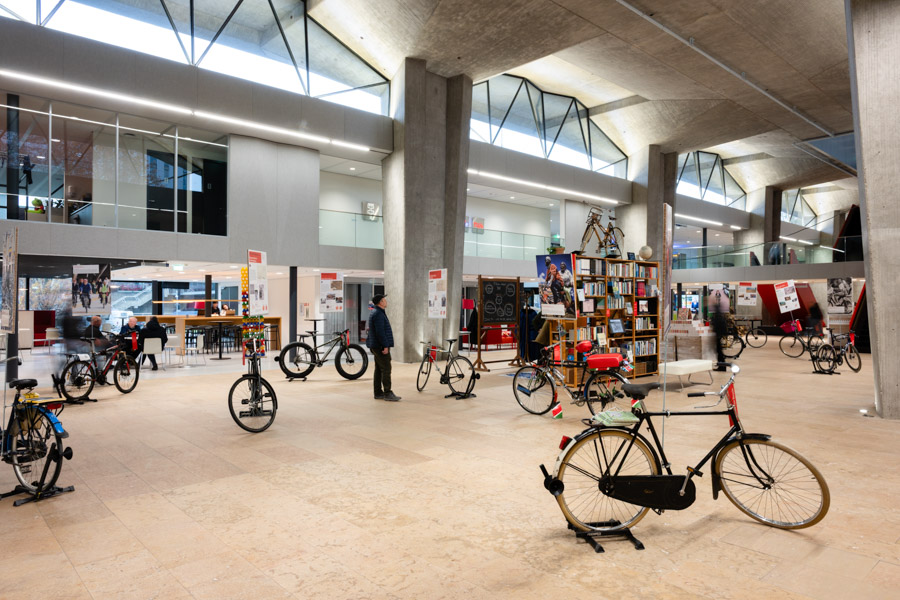
New elites give preference to cars
The Johannesburg chapter by Wits University lecturer Njogu Morgan — now back in Kenya where he is originally from — might not immediately stir excitement in the reader. Sadness and frustration are often palpable in his piece, particularly when he describes how apartheid curtailed cycling, while simultaneously oppressing an emergent industrial Black working class in other ways, by forcibly removing communities to distant townships. Later in the chapter, he notes that even the post-apartheid period has offered little support for a revival of cycling mobility. The book explains that new middle-class political elites, in Johannesburg as in other sprawling African cities, tend to view car ownership as a marker of success and to look down on the walking majority.
Asked why he proposed doing a book on cycling in Africa, when that is already the status quo, Morgan answers softly: “Maybe that’s why.”
Affordable freedom
Part of his dedication to the subject, Morgan explains, comes from his early passion for cycling, which preceded his academic work. “It gives you freedom, it is affordable. It was frustrating when, after stints in Europe and the US, I didn’t find it in Johannesburg. With a group of like-minded activists, we tried to talk to policymakers for a while, but they often did not seem to understand what the value of cycling could be. They were thinking that public transport projects were enough. We tried to explain that people need bikes to get to the often disconnected and distant points of public transport, that policy makers need to understand where people are and how they get from A to B. We can learn from history how that happened before. In the early 19th century, people were already putting bikes at train stations in Johannesburg.”
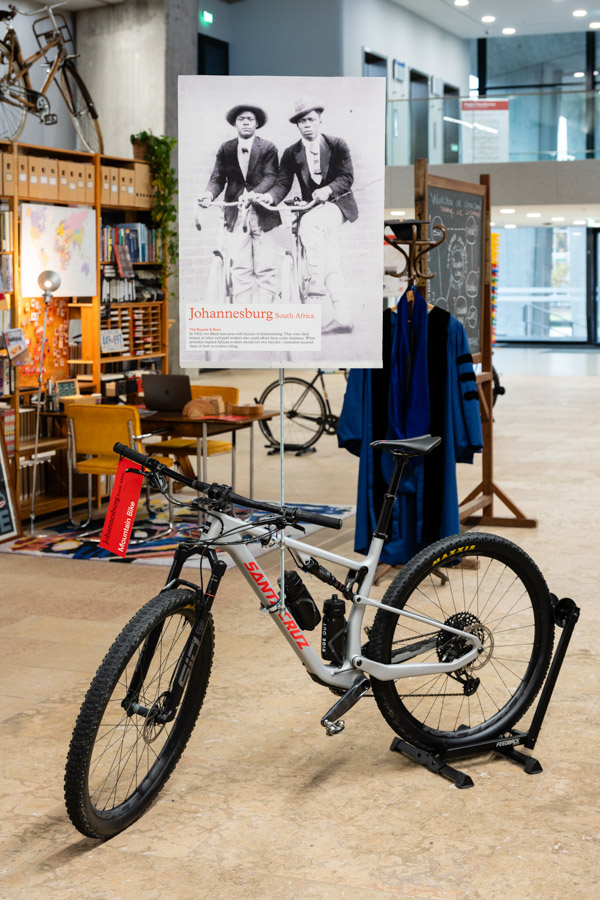
The discussions came with some success, but not much, he adds. “There was a push by a mayor at the time, but he wanted to roll out something quickly. This was supported by international consultants who said, ‘all you need is infrastructure’. So, then there were some bicycle paths and parkings here and there, but still disconnected from where people were and what they needed. It clearly takes time to develop a long-term perspective.” Building something as a once-off project, the activists found, also doesn’t take into account systemic needs like maintenance, cleaning, garbage removal, and ensuring cars don’t push cyclists away. “It’s pretty wild how the bicycle is an eye into so many things. Just by focusing on it, it opens up your mind to the whole of society, politics, even gender relations.”
Many women still walk with loads on their heads
The resulting, almost magical book — comprising not only Johannesburg but contributions from authors in seventeen African cities — shows, both verbally and visually, through an array of old and new photographs, how the bicycle becomes a ‘lens’ into the systems by which different people use bicycles, or suppress their use by others, for their own purposes. While colonial authorities reserved bicycles for civil servants and made their use difficult for ‘ordinary people’, in many communities today, men ride bicycles — and transport goods and passengers — while social pressures still relegate most women to walking and carrying heavy loads on their heads. Conversely, in places where women owned and rode bicycles, regardless of social pressure, the case studies in the book show that this brought significant benefits to them and their families.
Overcoming obstacles
Cycling Cities Africa is thus a treasure trove, showing how people literally overcome obstacles and progress in life, if only given wheels: from cycling between mines and townships, to transporting crops to markets, hauling fish from lakes, gathering firewood from mountains, and even smuggling coffee across borders to secure a better price. The name boda-boda, applied to motorised taxi-cycles in East Africa, is, we learn from the book, derived from the word “border.” In a continent where these borders were often inconveniently drawn by outside forces, people frequently need to cross them and will find a way to do so.
Borders are not the only obstacles Africa’s citizens-on-the-move must overcome to reach their destinations. While apartheid in South Africa was the most oppressive regime restricting free movement for its Black population, the non-car-owning majority in other countries, even post-colony, has faced many similar barriers: prohibitive licensing, the stigma of the bicycle as a marker of poverty or lack of success, poor or non-existent road maintenance, especially in rural areas, and the scarcity of road space for anything that is not a car.

And so, the poor majority remain forced to walk. “Often for hours every day,” says Njogu Morgan. “In Nairobi, 40 % of people walk very long distances every day, either because they can’t afford a boda-boda or matatu, or because they need to save their money for something else. You’d be shocked if you knew the distances people walk every day. So, if affordable bikes were made available, alongside proper infrastructure, it could really change lives.”
“They were happy it wasn’t about colonialism for a change”
“This is a real issue for the African colleagues we worked with,” says Ruth Oldenziel. “They were very eager to do this. This was their subject, something they see around them every day, that needed investigation. Some said they were happy that, for a change, it didn’t have to be about colonialism or migration.” It was frustrating for her at times because she is a historian. “These cities of millions have evolved from sleepy fishing villages. We were doing research in places that not only went through colonialism but also a kind of socialist post-independence phase, where leaders were stimulating bicycle use and even offering subsidies, then a neoliberal phase, up to now. I stubbornly kept insisting it must be about the past too, not just the cycling challenges in the present.”
Oldenziel’s efforts paid off, demonstrating how bicycle use also serves as a marker of historical social development. Archival research uncovered the story of how colonial authorities employed bicycle transport to govern and control subjects, with abundant examples including police patrols, missionaries on bikes, and essential services such as mail delivery. Interwoven with these accounts are descriptions of how post-independence leaders like Nyerere in Tanzania, Kaunda in Zambia, and Nasser in Egypt promoted bicycle transport for all, including the tale of a once-thriving Zambian bicycle factory. Another cross-border African parallel emerges in the narratives showing how such state support for cycling suffered a decisive blow under the IMF’s and World Bank’s neoliberal Structural Adjustment Programs in the mid-1980s. These policies, imposed to shrink the role of the state, emphasised privatisation and gutted budgets for developmental subsidies and social allowances for the general populace.
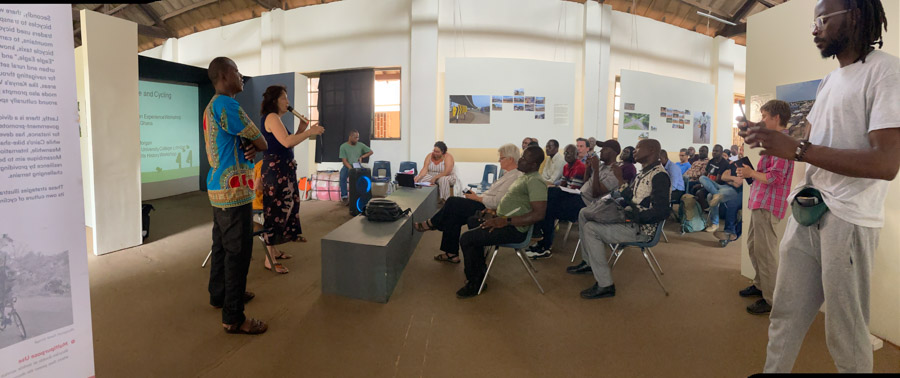
Shiny bike paths in Addis Ababa
Remarkably, while many citizens would henceforth be deprived of support for acquiring and maintaining bicycles, the market-driven approach simultaneously gave rise to a flourishing scooter and bike-taxi industry, the boda-bodas, across Africa. Yet even with this new economic sector emerging, a new political elite had arisen for whom the car remained the ultimate measure of success, and those who did not own one were simply too poor to matter.
In that social context, international pressure from ‘green’ institutions, combined with health messages promoting cycling, often produces what the researchers called ‘crazy’ situations. Oldenziel: “In Addis Ababa, working-class neighbourhoods have been demolished to make way for bike paths designed to meet the standards of a global cycling elite. You see similarly gleaming bike paths in Nairobi and Maputo. Local people also need such infrastructure, but policy does not support it.”
There are technocratic efforts outside politics
It underscores the need for bike activism, all agree. Oldenziel observes that “Even in Europe, it’s still difficult. But at some point, you find one or two civil servants, or one politician, who will listen.” From Nairobi, Njogu Morgan concurs: “There are efforts underway in the technocratic zone here, led by people working in transport planning in the city, behind the scenes, outside politics. They have even ringfenced a budget for walking and cycling infrastructure.” On the push required to make such initiatives possible, Morgan notes that the presence of UN organisations like UN-Habitat and the UN Environmental Programme UNEP has made a difference. “They have been able to create linkages (between international expertise, local activists, and officials) that Johannesburg has not been exposed to.”
“It all needs more support and follow-up,” says Oldenziel in Amsterdam. “But the start is here. We wanted to create real value that would impact society — a book that should appeal to policy makers, urban planners, cycling activists, everyone. So, we also told the story visually and created exhibits. It had to reach out, to look attractive.” This, she adds in an aside, was also important to the UN organisations they contacted. “They were so excited about this, too. Until then, they had only been producing boring PDFs and reports.”
Transformers
This mission to bring the research “out there” led Oldenziel to reach out to former curator of the Amsterdam Museum, Annemarie de Wildt, who set out to visualise the African cycling experience in an exhibition. De Wildt recalls: “It resulted in hilarious experiences, such as bringing an actual boda-boda on a plane to exhibit in the Netherlands and then learning how to bundle firewood in a way that it can actually be carried without falling off during the ride.” In the process, working closely with African cyclists, the team discovered the ingenuity and expertise with which people use and modify bikes to meet their mobility needs. Oldenziel observes: “Every single thread and screw in this boda-boda has a purpose, whether for carrying a passenger or transporting a load. There is expertise there that matters.” De Wildt: “I can’t say we have completely deconstructed it, but we have learned a lot. For example, how local bicycle makers and technicians adapt a single bike for dual use, transporting both people and goods. The bike gets transformed into a truck, a wheelbarrow, or a taxi.”
“You have to continuously knock on doors”
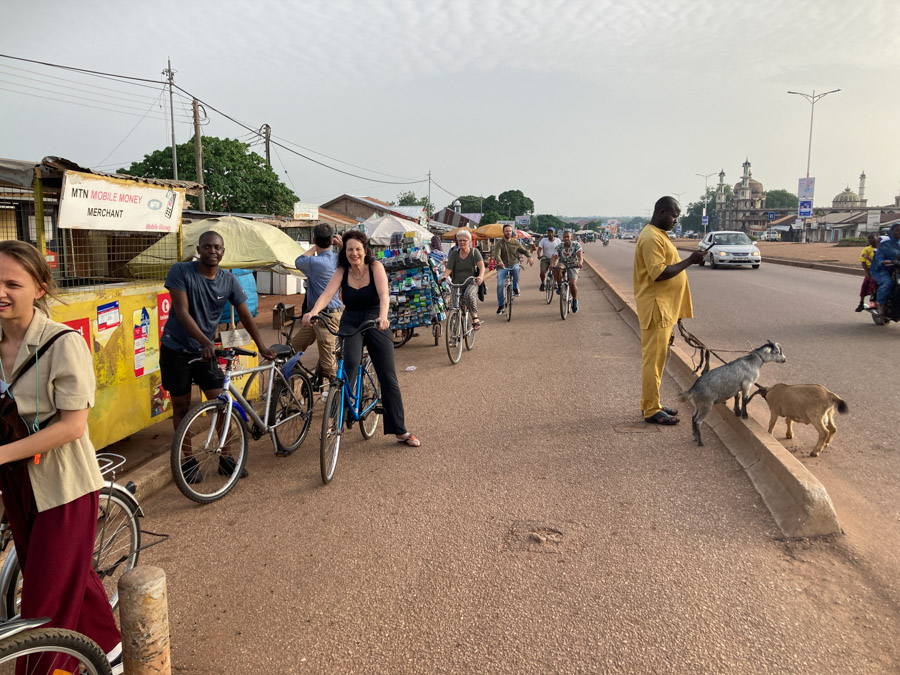
Harvesting that expertise and building on it to further “co-create” cycling in African cities will undoubtedly require a second research project and more books, say Oldenziel and De Wildt. Oldenziel adds, “We have a community on WhatsApp now. When the (African) colleagues first suggested this, I thought they couldn’t be serious. We needed to focus on archival work, which was difficult enough given the poor state of many African archives. But then I realised this is precisely why people turn to social media. They share everything, initiatives, observations from the street, everything. It’s incredibly enriching.” Cycle activism, Oldenziel expects, will continue to motivate the researchers on both ends of the globe. “It’s hard work; you have to continuously knock on doors. But we’re all set to do that. Frappez, frappez toujours.”
Cycling Cities Africa can be ordered here: https://www.transitiestudies.nl/product/cycling-cities-the-african-experience/?lang=en.
Call to Action
Working towards a new relationship of equality between Africa and Europe, ZAM platforms African investigation, activism and creativity that challenges exploitation, white supremacy and the erosion of democratic rights. Donate here.

